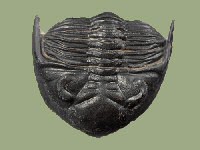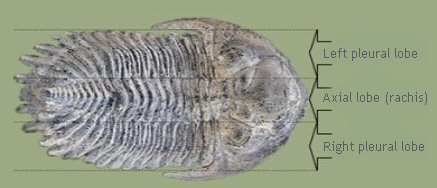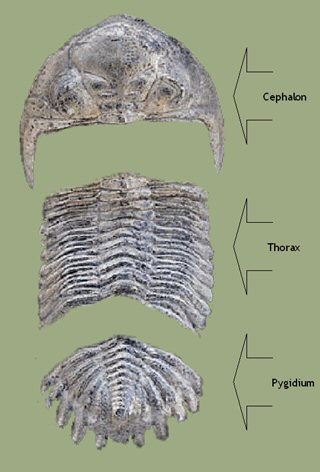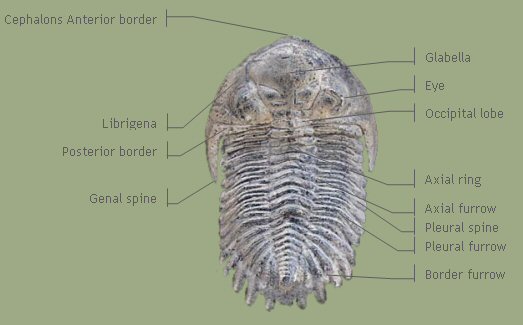|
|
|
TRILOBITA::
Homepage:: Trace fossils:: Preparation:: Cabinet:: Literature:: Links:: Geological Time:: Special:: Explanations::
The Team :-)
Comments:: The Arthropoda:: Exoskeleton:: The Cephalon:: Trilobites eyes:: Limbs:: Enrollment:: Habitats::
Trilobite Orders::
|
A hard Shell- The Exoskeleton - |
|
|
In biology the meaning of morphology is the theory of the appearance of life forms. The term morphology is deduced from the Greek (morphé = shape and lógos = word, theory). Quarry through the following pages comprising the basic morphology of our trilobites, and become acquainted with the characteristic features, structures as well as the habitats of Trilobita's "solid dwarfs"....
|
|
|
The ExoskeletonThe soft partial preservation at the fossil trilobites isn't in general existing. Even exoskeletons elementary basic elements like calcite, chitin and calcium phosphate are due to it's specific chemical and also physical characteristics (e.g. acid resistance, temperature dependence, weathering resistance etc.), there's no 100% guarantee for successfully processing of fossilization. The trilobite was solely dorsal (Lat. dorsum- the back) armored. Visualized the dorsal shield is comparable to a bowl, the little invertebratet carried around, dorsal- sided fitted in. The dorsal shield ends abruptly in an edge, the doublure, circumferential along the complete dorsal shields perimeter. Ventral sided (Lat. venter- the abdomen) the trilobite was nearly unarmored. A hard mouthpart typically underlies the Glabella, called hypostome, constituting the sole ventral armor segment. The relationship concerning attachment from the ventral structure hypostome to the rostral plate is in addition to hypostomes formation an important factor in trilobite classification. Cause of the hypostome, trilobites brain and stomach were shielded at dorsal- as well as ventralsided. Due to the exoskeleton, in the course of body growth's process. the trilobite had to submit to the ecdysis for several times, the molting. After shedding the old exoskeleton (better exoskeletons partial structures), or even the trilobites decease, the level of conservation was basically determined by the process of fossilisation (death, biostratonomy, diagenesis). Thus it`s exceedingly difficult to estimate, if one's handling a structure of a molting process or even a cadaver's part at last. Apart from this, the basic knowlegements about trilobites exoskeleton representing the entrance into trilobites benthos.
Verbalized significantly by the name 'Trilobite', trilobites body is divided both transverse- and longitudinal orientated into three major sections (trilobite - 'three lobed'). Considering as Metacanthina barrandei this tripartition should be claryfied.
|
Longitudinal lobi
Transversal lobi |
|
The rised axis (using the term backbone defining invertebrates body is a little bit tricky) running the length of the trilobites body from pygidium beyond thorax and finally cranial transferring into the glabella. The rachis is divided into several segments. Each of this segments per one pleura (Gr.- side, flank) is bilateral assigned (thoracic segments) The pleural furrow is running along the pleura.
The cephalon (Gr. - head) consist of several regions, which are separated from each other by facial stitches (suturae).
The single thorax segments (number depending on order 2.. = 15) are connected to each other over articulations. The exoskeleton therefore has an essential flexibility (e.g. for enrollment).
At pygidium this articulations are missing, that means the single segments are rigidly coupled, forming trilobites pygidial shield.
|
|
|
Survey dorsal |
|
|
|
|
|
|
|
|
|
|
|
|
|
|
|
|





